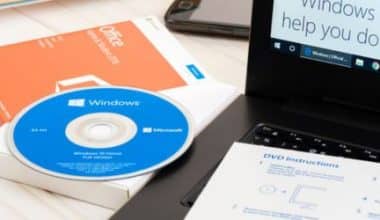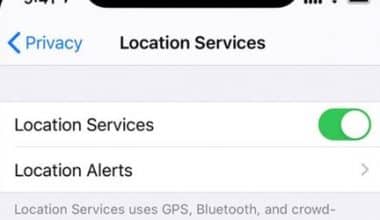IVR is an automated phone system technology that allows incoming callers to access information through a voice response system of pre-recorded messages without having to speak to an agent, as well as to use menu options via touch-tone keypad selection or speech recognition to have their call routed to specific departments or specialists. This process helps grow businesses in their communication. This article talks about the types and benefits of interactive voice response with the IVR medical system as an example.
Overview
Interactive voice response is a feature of an automated business phone system that interacts with callers and collects information by providing them with options from a menu. It takes action by focusing on the caller’s feedback via the phone line keypad or audio response.
The interactive voice response actions are determined by the caller’s choices; they can provide information or, if the problem is more complex, they can route callers to a human agent who can better handle their needs.
A well-designed interactive voice response software system can help improve contact center operations and KPIs while also increasing customer satisfaction. An effective interactive voice response system can help customers find answers and perform simple tasks themselves, especially during times of high call volume. In cases where a customer needs or requests to speak with a person, IVR technology can assist in quickly and seamlessly routing calls to the best call center agent to address their inquiry.
It enables businesses of all sizes to provide high-quality “always-on” customer self-service while also connecting callers to the appropriate agents when necessary.
IVR phone systems eliminate the need for a live agent to manually respond to incoming calls by playing pre-recorded menu options to which the caller responds either verbally or by entering answers via a touch-tone keypad.
What Does IVR Stand For?
The IVR is an acronym for Interactive Voice Response, It is a system that interacts with callers, collects information, and routes calls to the appropriate recipients.
How Does It Work?
When customers call a contact center, the first thing they will hear is IVR. The IVR will greet the caller with a prerecorded message before presenting them with a variety of menu options. Users will be instructed, for example, to press one or say “Service” to be directed to the service department, to press two or say “Sales” to speak with someone in the sales department, and so on.
Multilevel menus are supported by IVR solutions, allowing you to gather additional information before acting. For example, if a caller selects the service department, a sub-menu may prompt them to specify which product they are contacting. As a result, the IVR can route the call to a specific team that handles that product.
IVR is frequently useful in conjunction with ACD solutions. ACDs use IVR information, as well as call metadata, to place callers in a queue and prioritize their calls before routing the caller to the next available agent who is best suited to assist the customer as soon as possible. When you use these tools together, they reduce waiting times and increase the number of calls your agents can handle per day.
An organization can fully automate its outgoing messages by using text-to-speech (TTS) software on the other end of the phone call. Rather than recording all possible responses to a customer query, the computer can generate customized text-like account balances or flight times and read them back to the customer using an automated voice.
Features of IVR
Many of today’s most popular interactive voice response systems are built with voice extensible markup language, a specific programming language (VXML). The following are the fundamental types or elements of a VXML-based IVR system:
- Incoming and outgoing phone calls are routed through the PSTN or a VoIP network.
- A TCP/IP network is a standard Internet network, such as the one that connects an office to the Internet and intranet.
- VXML-based telephony server This unique server connects the phone network to the Internet network. It acts as an interpreter or gateway, allowing callers to interact with IVR software and access database information. The software that controls functions such as text-to-speech, voice recognition, and DTMF recognition is also housed on the server.
- The IVR software applications reside on the web/application server. On the same server, there could be several applications: one for customer service, one for incoming sales calls, and one for voice-to-text transcription. You can use VXML to write all of these applications. TCP/IP connects the Web/application server to the VXML telephony server.
- Databases: Databases store real-time data that IVR applications can access. When you call your credit card company, the IVR application pulls the current balance total from a database. The same can be said for flight arrival times, movie times, and so on. One or more databases can be linked to the Web/application server.
Interactive Voice Response Example
Computer-telephony integration can be seen in IVR systems (CTI). The tones produced by each key on the telephone keypad are the most common way for a phone to communicate with a computer. Dual-tone multi-frequency (DTMF) signals are useful for this.
Each telephone number key emits two tones at the same time: one low-frequency and one high-frequency. For example, interactive voice response generates both a 697-Hz and a 1209-Hz tone that the public switched telephone network universally interprets as a “1.”
In some cases, it is possible to completely avoid human intervention in interactive voice response services. For example, in interactive voice response, you can call your GSM operator and add funds to your account, or you can call your bank to receive up-to-date account information without communicating with the operator. IVR technology is frequently used to create automated telephone surveys in which the called user is asked to answer questions by dialing numbers.
Also, the example of interactive voice response, allows businesses to handle higher volumes of phone calls, reduce costs, and improve customer satisfaction by minimizing or even eliminating human interference.
What Is an Interactive Voice Response Example?
When you call a company or business, you might hear “press 1 for technical assistance, press 2 for sales support, press 0 to speak with the operator.” After you make your selection, your call is routed to an extension/call queue, or a voice message is played back to you.
What Is an IVR System?
Telephony appliances, software, a database, and enabling equipment can all be present in IVR systems. An enterprise can also run an IVRS in-house by purchasing the necessary software and infrastructure, or it can use a monthly fee-based IVR hosting service. Considerations for Evaluating the types of IVR Systems:
- Look for open standards solutions that are simple to integrate and will work with your existing software and hardware.
- Examine speech recognition technology and search for systems that can distinguish diverse dialects, pronunciations, and tones and that provide clients with a keypad when it cannot recognize their words.
- Determine the system’s ability to follow up on calls.
Best IVR Systems
The best types of IVR systems are listed below for your consideration.
- Data Chase: A simple UI with excellent customer service. There are periodic server problems.
- Voicent: Integrates well with Windows-based software and CRM apps, but there is a per-minute charge, which can add up.
- Nextiva: Provides excellent customer service for phone services, but poor internet connections result in dropped calls.
- PureCloud by Genesys: The user interface is simple and intuitive, with useful features, but the administrator interface and reporting feature could be improved.
- RingCentral: Excellent customizability and integration capabilities. Manages business communication processes effectively.
Types of IVR
The most frequent types of interactive voice response (IVR) example arrangements are listed below:
#1. Inbound Interactive Voice Response
One of the types of IVR is inbound. When a call is received, inbound interactive voice response has to attempt to anticipate the caller’s needs and give them options for obtaining the information they desire.
When most customers call a company, they receive the call with an inbound IVR, a self-service menu that allows them to access multiple services or departments by selecting a different voice command or touch-tone digit.
Customer support, answering frequently asked questions, and inbound sales are all prominent uses for inbound IVRs.
#2. Outbound IVR
The outbound is an IVR system that allows businesses to engage customers automatically through various types of communication channels, including voice calls, SMS, and emails. Moreover, many firms rely extensively on outbound sales efforts because they can augment other call features such as autodialers.
For instance, businesses use outbound IVR to automatically alert customers of upcoming appointments, payments, or promotions.
IVR Medical
IVR (Interactive Voice Response) is a versatile instrument that simplifies medical hospital-patient contact. Patients use touchtones or verbal answers to discover or enter information over the phone.
An easy-to-use interactive voice response (IVR) system for medical healthcare also allows callers to communicate freely and successfully resolve their difficulties, just like they would with a human.
Thus, automated inbound call resolution powers your patient access center or organization telephony, increasing patient happiness, achieving efficiencies, and lowering staffing expenses.
Some IVR medical systems integrate with existing phone systems by dividing certain business operations into phases. That means you may provide information to patients while also allowing them to make safe phone payments.IVR in medical healthcare at a low cost:
Improves “work schedules” to 24 hours a day, seven days a week.
- Boosts patient satisfaction.
- Payments into the revenue cycle are accelerated.
- Meanwhile, the patient can phone you on their own time rather than during business hours.
Are Healthcare IVR Payments Secure?
Taking medical payments via an IVR is safe and HIPAA compliant. In fact, using the medical IVR is far more secure than talking to someone on the phone. Specific account details and information known only to the patient are useful to verify their identity. Once authenticated, a patient can pay by credit card, debit card, or check over the phone. The medical IVR transaction information is reported using the same payment gateway as other payment channels.
It’s also vital to understand that storing data for future payments is done through tokenization. Credit card information is not located within the medical IVR system, rendering it useless to cybercriminals.
IVR Benefits
IVR solutions have various types of benefits. One of the benefits of IVR is that interactive voice response systems can save both consumers’ and employees’ time. Customers can utilize an IVR to obtain information without waiting on hold for a customer care professional. Below are the following benefits of IVR types: There are
#1. Orders Are Called Based on Their Worth
However, the benefits of IVR systems are that they can be programmed to prioritize and redirect calls based on the caller and their requirements. You can route high-value customer calls to the most appropriate or qualified agent this way. If no agents are available, the caller will be placed at the front of the queue. This prevents your team from losing a crucial caller’s business owing to high wait periods.
#2. Options Are Plainly Displayed
Using voice prompts, an IVR system makes selections very obvious. When problems do not fit the mold of accessible solutions, there is always the option to “speak to a real person” to help clarify things. It is also part of the benefits of IVR
#3. There Will Be No More Connection Issues
When transferring calls, a receptionist may inadvertently route them to the wrong department, irritating callers. Customers use an IVR to make their own transfers.
#4. Quicker Processing
Another one of the benefits of IVR is that rather than having an employee try to figure out what the consumer wants, the customer can use elimination to locate the closest thing available.
#5. Increased Inbound Calls
Instead of having only enough call capacity to handle a few callers, all calls are routed through the IVR at the same time. Customers are then connected to the proper department, giving personnel more time to resolve calls.
#6. Lower Expenses
An automated system’s increased efficiency and ability to handle inbound calls means that the same number of personnel can handle more calls.
#7. Constant Accessibility
The IVR system can be useful to a customer at any time of day or night. Even if the end result is “leave a message,” the customer has accomplished something. This improves the customer’s view of the process and increases the likelihood of repeat business.
#8. Brand Identification
An IVR allows a corporation to tailor the system to its own services as well as the demands of the customer. This improves clients’ perceptions of the brand as a whole and allows the organization to establish a reputation for customer focus. It is also part of the benefits of IVR.
#9. Improved Mobile Connectivity
The efficiency improvements of an IVR thus, allow mobile consumers, who may have limited time to converse, to progress to a solution more quickly. This also accommodates mobile consumers and increases their likelihood of returning.
#10. Enhance the Company’s Image
However, the benefits of IVR are that the company provides 24/7 assistance and can handle concerns on the first call, making it one that can be trusted and relied on. And an interactive voice response service can boost your company’s image by making it more accessible and assisting customers in resolving their complaints swiftly and efficiently.
What Is the IVR Phone Number?
Interactive voice response allows you to convert a standard phone number into an AI-enabled number that can take calls automatically, route them to agents, and reply to client inquiries. Call +91 92129 92129 right now to get an IVR number for your company.
What Is the Purpose of IVR?
Interactive Voice Response (IVR) is mostly used by businesses for numerous reasons among which are;
- Reroute incoming calls.
- To save money, handle fewer live calls with a live representative.
- Improve the client experience.
- Give clients the option of using self-service to resolve straightforward account issues.
Additionally, the first-contact resolution rate is increased when the appropriate department is contacted. decreasing handle times Real-time information about the caller, such as account verification and call drivers, should be made available to customer service representatives. IVRs can offer a better customer experience while saving organizations thousands of dollars annually in wasted call time.
What Is an IVR Call Flow?
The planned prompts and inputs you expect callers to make before speaking with an agent are known as an IVR call flow. It functions as a flowchart that branches out to assist callers in getting where they’re going. The Interactive Voice Response phone system handles inbound call transfers rather than a real person. A visual call flow builder is a feature of Nextiva’s NextOS communications platform.
What is IVR Menu?
It is an option that customers can use to traverse the IVR experience. It can be activated by the caller by pushing the touch-tone dial-pad or by speaking, depending on the IVR’s programming.
It’s undoubtedly happened a million times to you. “Press 1 for customer service or press 2 for technical assistance” comes to mind. If you are familiar with those phrases, you have a rudimentary understanding of what an IVR menu is.
Given that it can have numerous layers, it is also known as a phone tree (or branches, if you will). Depending on how deeply you program your IVR, one selection may lead to two or three more options.
Naturally, it is advised to maintain the IVR menu or phone tree as straightforwardly as possible. However, it still depends on your institution’s demands.
How do IVR Menus Function?
IVR menus typically feature a top-level menu for incoming calls as well as any extra submenus that are required. Callers can direct their calls by making a selection from a menu.
All IVR systems allow customers to select options by choosing a number from the control keypad on their cellphone. However, this has some restrictions. An IVR system that requires routing hundreds of different sorts of inquiries can be constrained with only nine alternatives (the number zero is often reserved to speak with an agent).
The IVR system’s ability to take verbal input is a more contemporary feature. Users may now speak about any issue and be accurately routed whilst still feeling more at ease and conversational.
How Do You Set Up IVR?
How Do You Set Up IVR? Once you’ve selected the appropriate service provider, go to your dashboard and look for the section where you may modify your IVR settings.
From here, you should choose how to set up the call flow. The majority of IVR flows start by providing a welcome message, then go over the available menu options before waiting for feedback and repeating the message. The majority of platforms provide you the option to record an audio message or write a message that will be read aloud to the caller using text-to-speech AI.
The selections on the menu can be programmed to change depending on the key hit. A voicemail, an extension, a call queue, an IVR submenu, or another IVR activity like providing customer information or confirming the caller’s identification are typical choices.
How Much Does IVR Cost?
The typical price for an IVR service is between $0.02 and $0.10 per minute of talk time. It’s important to understand the financial benefits of transferring incoming calls from live operators, which might be $0.25/min multiplied by the average handle time.
An on-premises solution costs more than $1,500 per line, not counting configuration and management, in contrast to internet-based IVR software.
What Does “IVR” Mean in Banking?
For the convenience of its customers, the bank has implemented an IVRS (Interactive Voice Response System). IVR (Interactive Voice Response) is one of the most effective technologies for assisting a bank in automating interactions with existing and new clients.
What Is an IVR Payment?
A telephone payment system is known as interactive voice response (IVR). It enables customers to make an automated payment over the phone without having to speak with a live person. IVR payment services add value and revenue to your organization without the need for additional labor.
Conclusion
Many organizations are finding ways to develop. This IVR is one of the ways a business organization can grow. So, therefore, businesses should apply this process so as to grow, especially in their communication process. This article teaches “what is an IVR.”
WHAT IS AN IVR FAQs
How long does it take to complete an IVR transfer?
Callers can change from IVR self-service payments to agent-assisted payments at any moment. From start to end, the process usually takes no longer than five minutes.
What is IVR and VOIP?
IVR devices are able to instantly classify callers according to their requirements and automatically route them to the appropriate resource within your organization. Impress callers with a better IVR menu.
Is IVR payment secure?
The payment will be performed instantly and saved in order to safeguard delicate information. Your IVR Payment Processing system is a secure and reliable solution for your consumers if it is Payment Card Industry (PCI) compliant.
Related Articles
- CALL CENTER SOLUTIONS: 19+ Cloud-Based Solutions for any Business (+ Reviews)
- PHONE SYSTEMS: 11+ Phone Systems for any Business & All You Need
- Inbound Marketing: Effective Inbound Marketing Examples
- Inbound Marketing vs Outbound: How to Scale any Business Combining both Strategies
- CALL MANAGEMENT SYSTEM: How it works
- What is Outbound Marketing Strategy? Examples & Tools






